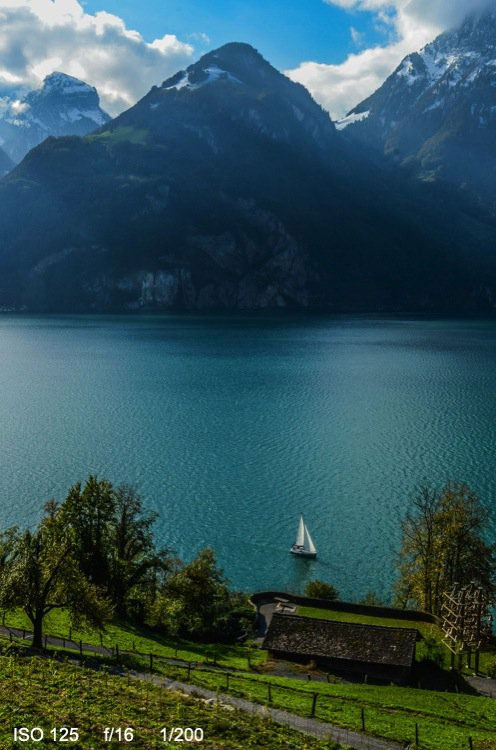The simple definition of photography is painting with light.
When you paint with light, you create a story in a split second. That's what all the photos are about. Technically, your camera measures the amount of light in the scene, and you tell it how much of that light you want to use in order to create an image with the correct exposure. It becomes your story.
There are three basic settings for light control; shutter speed, ISO and, my favorite, aperture. Each of these installations has its own individual way of measuring the amount of light. When all three are properly balanced, you create the correct exposure.
While each of these settings measures the amount of light, they also have distinct characteristics that add an artistic touch to your shots. By understanding them, you are in control of the entire story you want to tell.
Shutter speed captures or "freezes" motion. ISO helps control how sensitive your camera is to the light in the scene. Finally, aperture creates depth of field. That's where the story comes in; it is with the aperture that you control what is in focus and what is not.
As a photographer, how do you decide what to focus your viewer's attention on? How do you create your story? That's what the diaphragm is and that's why I love it.
Where is she and what is she doing?
The aperture is in your lens, not in the camera body. The lens opening opens and closes to control the amount of light. By choosing a certain aperture value, you tell the lens how much light should hit the sensor.
This is very similar to how the human eye works. Your pupils expand and contract according to how much light is in the scene. For example, when you enter a dark cinema hall. At first you don't see anything, but then your eyes adjust. The pupils dilate allowing you to see as much light as possible in a dark room.
Again, when you are outside on a sunny day, the light is too bright at first. Your pupils constrict, letting in less light. The lens aperture works on the same principle. A change in the aperture value is a narrowing or expansion of the pupil.
The aperture size of a lens is measured in so-called f-stops (f-stop). Like the rest of the camera settings, it has a general range.

Memorizing numbers is optional. It is important to see the range in the settings. There is a trick here; the smaller the f/number (for example, f/1.8), the more the aperture opens. This means more light will enter the lens opening and vice versa. The larger the aperture value (for example, f/22), the smaller the aperture will open and less light will enter the lens.
Take f-number as a fraction. Just replace F with number one. 1/4 of a pie is much more than 1/16 of a pie.
A small note: not all lenses are created equal. Different lenses have different apertures. Some have a wider range, some less. Standard lenses have a range of f/3.5–f/22. Special ones can go down to f / 1.2 and below.
Seeing depth of field.
That's where the fun begins. When measuring the amount of light, as the aperture of the lens expands and contracts, the depth of field is also measured. Again, your eyes do the same!
When you look at the monitor and read this article, all the words are basically in focus for your eyes. With your peripheral vision, you can also see other objects, but they will be out of focus.
Notice your hands are on the keyboard, they're in the foreground, and maybe a bookshelf in the background. You can see them, but they are out of focus. You see the depth of field.
A good photograph does just that. It captures the foreground, middle and background. By setting the aperture, you control which of these areas will be in focus. It all depends on your intention, on your story.
Definition of depth of field.
With the focus point (that little square in the middle of the viewfinder) you focus on a particular part of the scene. This dot will be the clearest in your image. The area in front of and behind this focus point will also be in focus. The distance between the extreme front and rear points that are in focus is considered the depth of field. You decide what it will be by choosing a certain aperture size.

This is a story about a monkey on a rock. The bushes in the foreground and the rock temple in the background are out of focus. They are out of focus. This will draw your attention to the focal point, the monkey in the middle.
Remember, smaller f/number, larger opening, more light enters the lens. This means that a smaller area of your scene will be in focus and you will end up with a shallow depth of field. The opposite is also true. Large f-number, smaller opening, less light enters the lens. In this case, almost the entire scene will be in focus, and you will get a greater depth of field.
Simply put, the larger the f-number, the larger the area that will be in focus. The smaller the aperture value, the smaller the area in focus.
Depth of field in more detail.
When you set the focus point on a particular area, that location creates the focal plane. Anything at the same distance from the lens is in the same focal plane and will be in focus.

With a shallow depth of field (small number), the focal plane is very small. If the depth of field is larger (large number), then the focal plane becomes larger.
Here is the same scene, photographed with different aperture settings. Note that depth of field affects how much of the image remains in focus.

At f/2.2, only the sunglasses are in focus. At f/5.6 the hat is also in focus. Using f/8.0 you can see the trees in the background. And finally, at f/22, the entire image is in focus.
Which one will tell the best story? As a photographer, it's up to you to decide.

Now that you have a grasp of the basics, it's time to have some fun! Here are some tips to get you started.
Set your camera to Aperture Priority. You will have complete control over the aperture without having to worry about the correct exposure. This way you can just focus on the depth of field. This is a great way to understand what your lens is doing when you change aperture settings.
Choose an item or scene. Photograph it from different angles. Choose different areas to focus using the full range of aperture settings.
Check out these tips on how to use depth of field in different scenarios:

When you are photographing a single subject, such as a portrait of a child, it is best to use a smaller aperture value, such as f/1.2-f/2.8. Creating a shallow depth of field draws attention to the face, which is always the most important thing in a portrait;

When shooting a small group of people (2-5 people), set f/4-f/8. This depth of field is slightly larger, and this ensures that all people are in the focus area;

Any time you have an open scene, like a landscape, and you want everything to be in focus, choose a number above f/10.
These are just tips. Photography is an art form. Be creative and remember that this is all about telling a story.















